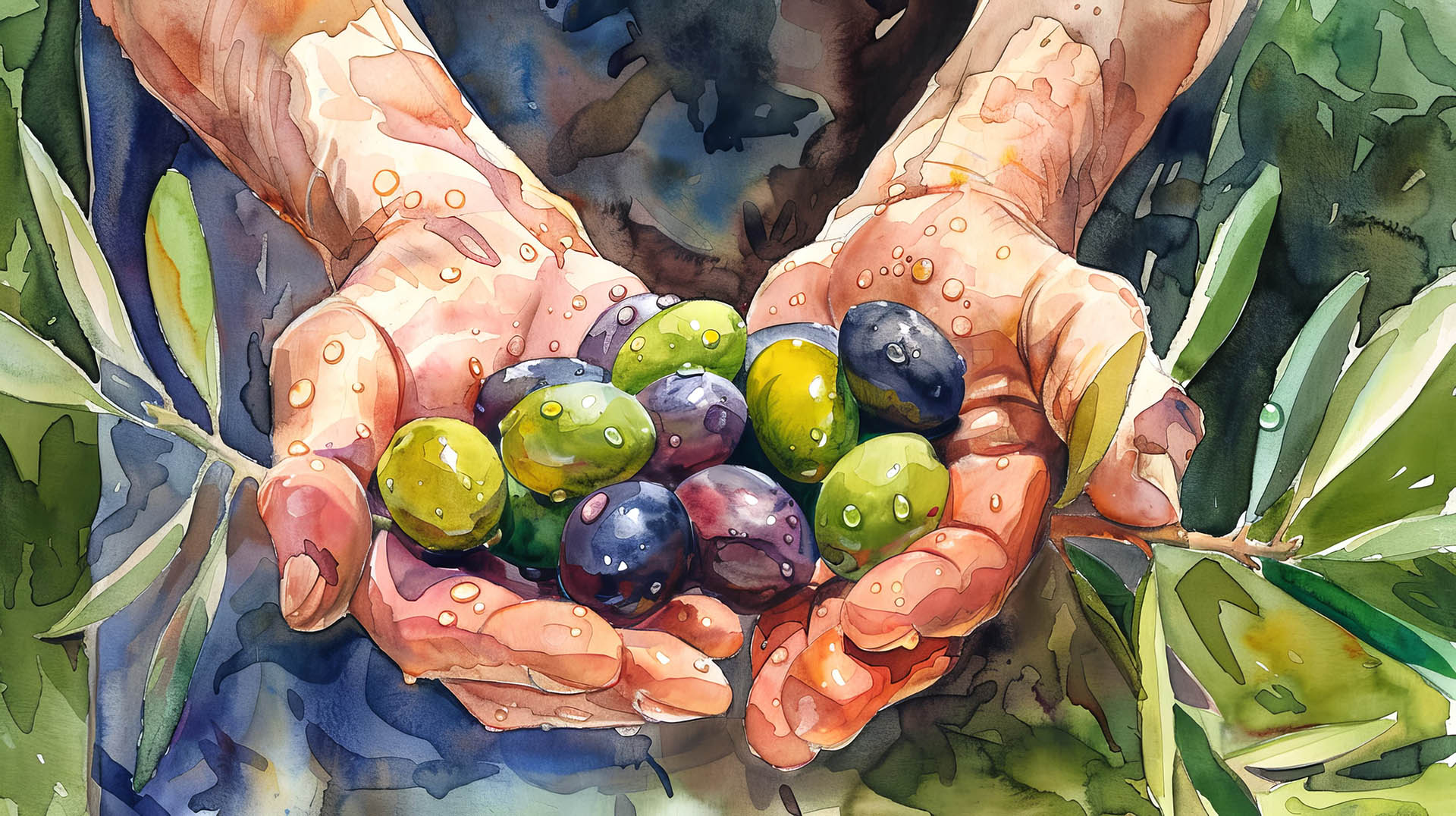Olive harvesting is a process that blends tradition, patience, and skill—almost as if it were a work of art. Since ancient times, this practice has symbolized hard work and a deep connection with nature. It is a scene so evocative that it even inspired great artists like Vincent van Gogh, who in 1889 immortalized the beauty of this rural labor in his painting The Olive Harvest.
Just like in a masterful brushstroke, every movement in olive harvesting is crucial: the precise timing of the harvest, the technique employed, and the careful handling of each fruit. While tools and methods have evolved over time, the essence of this labor remains unchanged. In this article, we will explore the olive harvesting process—from traditional methods to modern innovations—and how this process itself represents an expression of art and dedication.
Van Gogh’s Painting and Its Inspiration
In December 1889, Vincent van Gogh painted a series of works inspired by the olive groves of Saint-Rémy-de-Provence, France. Among them stands out The Olive Harvest, a painting that depicts farmers working beneath the trees during the harvest season. This piece was created during his stay at the Saint-Paul-de-Mausole asylum, where he sought peace and recovery following episodes of emotional distress.
For Van Gogh, olive trees held special significance, as he saw them as symbols of resilience and hope.
Through The Olive Harvest, he not only captures a common rural scene but also conveys his unique perspective on the world: a profound connection between nature, human effort, and spirituality.
The Relationship Between Art and Nature in Van Gogh’s Work
For Vincent van Gogh, nature was not just a recurring theme but also a source of inspiration and a reflection of his emotional state. In paintings like The Olive Harvest, the artist captures the essence of the landscape not through detailed realism, but through vibrant colors and dynamic brushstrokes that convey movement, emotion, and energy.
Olive Harvesting TechniquesTécnicas de recolección de la aceituna
For centuries, olive harvesting has been an artisanal process requiring patience, skill, and respect for the fruit. While mechanized techniques exist today, many producers still rely on traditional methods that ensure careful harvesting and preserve the olives’ quality. The most commonly used techniques include:
Hand Harvesting
This is the oldest method, involving the direct picking of olives from the tree or the ground by hand. It is especially used for table olives, where avoiding damage to the fruit’s skin is crucial. Though slow and labor-intensive, this method allows for the selection of olives at their optimal ripeness.
Beating with Nets (Vareo)
Vareo is a traditional technique in which harvesters strike the branches with long poles to make the olives fall onto nets spread on the ground. Once collected, they are gathered and transported for processing. This technique remains common in many olive-growing regions and, while physically demanding, is faster than manual harvesting.
Stripping (Ordeño)
Stripping is a manual technique where the harvester runs their hand along the branches to gently detach the olives without damaging them. It is primarily used for table olives, as it prevents bruising that could affect their quality. Though slower than beating, this method ensures a perfectly preserved fruit.
The Cultural and Social Value of Olive Harvesting
Olives are much more than just a fruit; they are a symbol of Mediterranean culture and a fundamental pillar of its gastronomy. Since ancient times, this small yet powerful food has been valued not only for its flavor but also for its nutritional properties and its role in the economy and society.
An Essential Food in the Mediterranean Diet
Olives and their most prized derivative, olive oil, are integral to the Mediterranean diet, which UNESCO recognizes as an Intangible Cultural Heritage of Humanity. Their consumption is linked to numerous health benefits, such as reducing the risk of cardiovascular diseases due to their high content of monounsaturated fatty acids and antioxidants. Additionally, olives are rich in vitamins A and E, as well as essential minerals like iron and calcium.
In Mediterranean cuisine, olives are enjoyed in various ways: as appetizers, in salads, in stews, or even as the star ingredient in traditional dishes. Their versatility and flavor have made them indispensable in the gastronomy of countries such as Spain, Italy, Greece, and Turkey.
Furthermore, we invite our blog visitors to explore our dedicated post on the importance of olives in the Mediterranean diet.
A Fruit with a Rich History
The cultivation of olive trees and the production of olives date back thousands of years. It is believed that the first domesticated olive trees appeared over 6,000 years ago in the eastern Mediterranean region, in areas that today include Turkey, Syria, and Palestine. From there, cultivation spread to Egypt, Greece, and Rome, becoming an essential product in the economy and daily life of these civilizations.
The Greeks considered the olive tree a divine gift and associated it with Athena, the goddess of wisdom. In Ancient Rome, olive oil was used not only in cooking but also in medicine, cosmetics, and even as a fuel for lamps. Over time, olive cultivation expanded throughout the Mediterranean basin and, later, with colonization, reached the Americas.
Today, olives remain a symbol of tradition and gastronomic excellence, with Spain leading global production. Companies like Aceitunas Torrent continue this heritage, combining traditional methods with innovation to offer a product that keeps the legacy of the olive tree alive in both history and on our tables.
Our Selection of Olives
To truly understand the relationship between art and olives, there is no better way than by tasting our wide variety of olives, from our pitted black olives to our whole green olives. For those looking to explore new flavors, we also offer stuffed green olives with red pepper.
Flavored Olives
Finally, we invite you to discover our selection of specially flavored olives:










